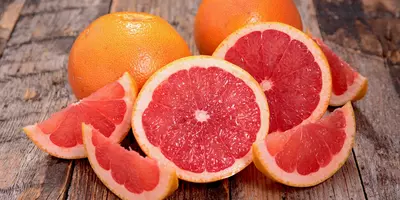Can Dogs Eat Bread?
- 05 Apr 2023
- 4m read

Toasted and buttered, baked with garlic or filled with ham and cheese – bread is loved by humans at breakfast, lunch and dinner. And sometimes in between, too.
But can the same be said for our pooches? As they eye up your chicken sandwich and ogle your burger, you might be wondering, can dogs eat bread?
Is Bread Bad For Dogs?
The answer is not as easy as yes or no.
Whilst it is not harmful, your pooch should only eat bread in moderation or it can make them unhealthy.
You should think of bread (both white and brown) as a rare treat, not an everyday staple. Relative to other foods, bread is low in nutrients but high in calories.
Considerations When Feeding Bread to Your Dog
If you're thinking of sneaking your dog a crust or two, here are some other things you should think about first.
Yeast
While bread's a tasty snack, you’ve got to make sure you give your dog bread that’s fully cooked.
Anyone who has watched Bake Off will know that underbaked bread will inevitably attract Paul’s iciest stare. Not only does it taste unpleasant, but it's actually not at all good for us. Uncooked yeast harbours germs and bad bacteria that are particularly bad for dogs.
Bread needs a warm, moist and draft-free environment to 'prove' – that's the process of raw dough rising and growing thanks to the activity of the live yeast it contains.
A dog’s stomach is suitably warm, moist and draft-free so if they eat raw dough or undercooked bread, it's the perfect environment for yeast to ferment.
This can result in uncomfortable bloating. And worse, yeast can release ethanol gas into your dog's bloodstream, putting them at risk of alcohol toxicosis. If your pooch looks weak, is having seizures or has an unsteady gait after eating bread, they could be at risk, so call your vet immediately.
Food sensitivities
So you’ve checked that the bread is cooked and your pooch is more than keen to give it a try, but have you considered food sensitivities? As it's made from grains, bread can often trigger intolerance symptoms in dogs, so you may need (or prefer) to avoid it altogether.
Added ingredients
Raisins, which is often found in varieties of sweet bread, contain toxins which can be fatal to our pooches. Nuts often don’t go down well either. They can be a choking hazard or cause intestinal blockages. Some nuts, like macadamias, are also known to be toxic and so should be avoided at all costs.
Garlic might smell delicious baked into a crusty baguette, but it's a potent member of the allium family (along with onions and leeks) which can also be toxic to dogs in large amounts. Even a little bit can cause tummy pain. So, make sure to give garlic bread a miss.
Hidden dangers crop up in mass-produced loaves in the form of preservatives and sweeteners such as dog-toxic xylitol. So always check the label before you offer your dog a slice.
Can Dogs Eat White Bread?
Health queens assemble. It’s time for the white vs brown bread debate.
Truth is, for dogs there is no real winner. Whilst dogs can technically eat bread, it is not recommended as part of their diet, regardless of the variety.
White bread is particularly high in carbohydrates and has very little nutritional value for dogs.
Can Dogs Eat Brown Bread?
If you’re going to choose to feed your dog small amounts of bread, whole grain bread with little to no added sugars or preservatives is best, but it is still recommended to avoid bread all together.
Can Dogs Eat Seeded Bread?
Similarly, seeded bread is not recommended as part of a dog’s diet.
Dogs can have severe difficulty digesting seeds, sometimes resulting in blockages. If you’re going to feed your dog small amounts of bread, avoid choosing seeded bread.
Does Bread Help a Dog’s Upset Stomach?
When humans have upset tummies, dry toast is the go-to settler, but it isn’t a good choice for your dog.
Plain rice and chicken are more appropriate, as your pooch can take in some nutritional benefit while it takes care of their tum. Bread offers calories but not much goodness. A dog who eats bread regularly can be at risk of obesity and the associated problems it brings, such as joint pain.
Whatever you choose to feed your pooch, making sure it's balanced, complete and caters to their personal nutrition requirements is key.
Butternut Box is Nutritionally Complete and Balanced
When you sign up with us here at Butternut Box, we ask you questions about your pooch, such as their age and activity level. That way we can take them into account and make sure every portion we send you is perfectly sized, as well as spectacularly delicious.
We take away the guesswork. There's no need to wonder if your pooch can eat this and that when you feed them Butternut Box. We've done all the work for you. Our food contains only the best ingredients that will leave your pooch feeling their happiest and healthiest.

.webp)


